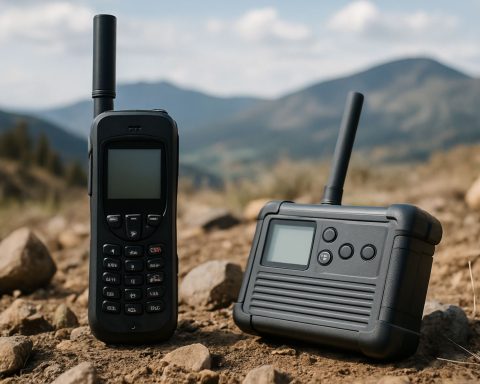- CU Medicine introduces a groundbreaking bladder cancer organoid biobank tailored to the Asian population, revolutionizing precision medicine.
- The biobank addresses the distinct genetic mutation profiles of Asian patients, enhancing personalized treatment options and improving clinical outcomes.
- It bridges basic research with clinical application, allowing deep exploration of tumor microenvironments and mechanisms of drug resistance.
- The initiative offers tailored prognoses and personalized therapies, bolstering the success rates of clinical trials in Asia.
- Validated through xenograft animal studies and patient outcomes, the biobank sets a new standard for precision medicine in bladder cancer treatment.
- This advancement not only impacts Asian oncology but also sets a global precedent in the fight against bladder cancer.
In the vibrant heart of Hong Kong, amidst the hustle and bustle of its bustling cityscape, a beacon of hope emerges for those grappling with the shadow of bladder cancer. The Chinese University of Hong Kong’s Faculty of Medicine (CU Medicine) has unveiled a groundbreaking advancement—a first-of-its-kind bladder cancer patient-derived organoid biobank specifically for the Asian population. This pioneering initiative is not just a step forward but a giant leap in the quest for more effective therapies against a disease that stubbornly ranks among the ten most common cancers worldwide.
Bladder cancer, with its dual nature of non-muscle invasive (NMIBC) and muscle invasive (MIBC) forms, presents a formidable challenge. Its relentless tendency for recurrence and metastasis complicates treatment, leaving traditional protocols like surgery and chemotherapy falling short. Surgery often brings a slew of complications, while chemotherapy can provoke drug resistance, making it an imperfect ally in the battle against advanced stages of the disease.
Enter the revolutionary biobank—an arsenal created to counter these very challenges. This biobank is more than just a repository; it is a transformative tool that bridges the gap between fundamental research and clinical application. It allows researchers to delve deeply into the tumor microenvironment, revealing nuances and mechanisms of drug resistance previously obscured.
The unique innovation lies in its focus on the Asian genetic landscape. Genetic mutation profiles differ significantly between Asian and Western populations, influencing treatment responses and survival rates. By tailoring the biobank to these genetic particularities, CU Medicine empowers local physicians to offer more precise prognoses and personalized treatments, thus enhancing clinical trial success rates and improving patient outcomes across Asia.
What sets this biobank apart is its validation. Organised through rigorous xenograft animal studies and corroborated by patient clinical outcomes, the organoids serve as living databanks, offering invaluable insights into effective drug development and precision medicine. This approach ensures that new therapies are not just innovative but also acutely targeted, maximizing their efficacy against the intricate wiles of bladder cancer.
This momentous achievement does more than scratch the surface of Asian oncology; it redefines it. By aligning with the genetic idiosyncrasies of the region’s population, the biobank fosters the development of bespoke treatments for Asian patients, offering not merely hope, but a promise backed by cutting-edge science.
As we stand at the cusp of this new frontier, the message is clear: Precision medicine is not a distant dream. It is here, reshaping the landscape of cancer treatment and setting a precedent for the future. This remarkable biobank is a testament to human ingenuity and the relentless pursuit of knowledge, lighting the path toward a world where a bladder cancer diagnosis is met not with uncertainty but with assured, groundbreaking possibilities.
Revolutionizing Cancer Treatment: How Hong Kong’s Bladder Cancer Biobank Is Changing the Game
In a significant breakthrough, the Faculty of Medicine at The Chinese University of Hong Kong (CU Medicine) has established a unique bladder cancer organoid biobank. Designed specifically for the Asian population, this biobank is a game-changer in cancer research and treatment, particularly for those grappling with the complexities of bladder cancer.
Understanding Bladder Cancer and Its Challenges
Bladder cancer comes in two main forms: non-muscle invasive (NMIBC) and muscle invasive (MIBC). Each presents distinct challenges, particularly due to their tendencies to recur and metastasize. Current treatments like surgery and chemotherapy often fall short. Surgery can lead to complications, while chemotherapy frequently encounters the obstacle of drug resistance.
What Sets the Biobank Apart?
The biobank is more than a collection of cells; it signifies a new chapter in personalized medicine. What makes this initiative groundbreaking is its focus on the Asian genetic landscape. Genetic mutation profiles vary between Asian and Western populations, affecting treatment outcomes. By concentrating on these specific genetic factors, CU Medicine enables physicians in Asia to offer more accurate diagnoses and personalized treatments.
Key Features of the Biobank:
1. Patient-Derived Organoids: These are 3D miniaturized and simplified versions of organs that mimic the micro-anatomy and functionality of bladder tumors.
2. Xenograft Animal Studies: These experiments demonstrated the validity of the organoids, bridging research and practical application.
3. Personalized Medicine: Tailored treatments enhance the effectiveness of therapies, improving survival rates in the Asian population.
4. Precision Drug Development: By understanding drug resistance mechanisms, researchers can develop targeted therapies.
The Promise of Precision Medicine
Precision medicine is no longer an elusive concept; it is rapidly becoming a reality. The biobank paves the way for the development of bespoke treatments, offering hope where traditional methods have faltered. This approach culminates in clinical trials that are more likely to succeed and therapies that are significantly more targeted and effective.
How-To Steps for Navigating Bladder Cancer Treatment
1. Seek Genetic Testing: Understanding your genetic profile can inform treatment decisions.
2. Opt for Personalized Therapies: Wherever possible, choose treatments tailored to your genetic makeup for better outcomes.
3. Regular Monitoring: Due to the high recurrence rate of bladder cancer, consistent follow-ups are crucial.
4. Stay Informed About New Research: Keeping abreast of advancements like the biobank can provide access to cutting-edge treatments.
Real-World Use Cases
The application of organoid biobanks is vast, including facilitating drug discovery, improving clinical trial accuracy, and tailoring patient-specific treatment plans.
Industry Trends and Future Predictions
The success of CU Medicine’s biobank signifies a broader trend towards precision medicine in oncology. As organoid biobanks become more integrated into research, expect rapid advancements in targeted cancer therapies and improved patient outcomes.
Actionable Recommendations
– For Researchers: Collaborate with Asian biobanks to understand regional genetic variances.
– For Clinicians: Utilize biobank insights to refine patient treatment plans.
– For Patients: Engage in discussions about precision medicine with your healthcare provider.
In conclusion, CU Medicine’s bladder cancer biobank is a revolutionary step towards transforming cancer care. By focusing on genetic particulars specific to Asian populations, it optimizes treatment efficacy, making the fight against bladder cancer more strategic and effective.
Explore more innovations from The Chinese University of Hong Kong at their official website.









